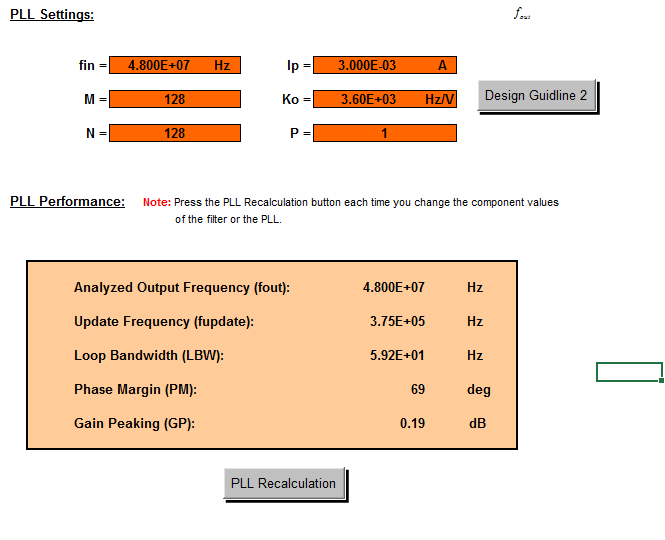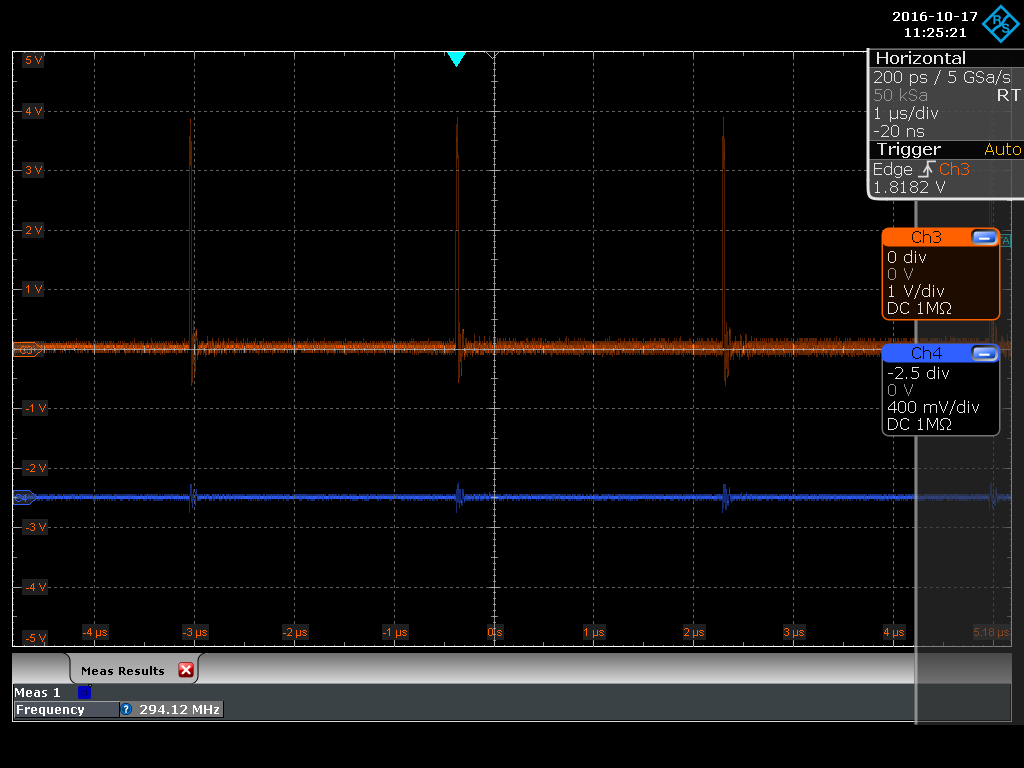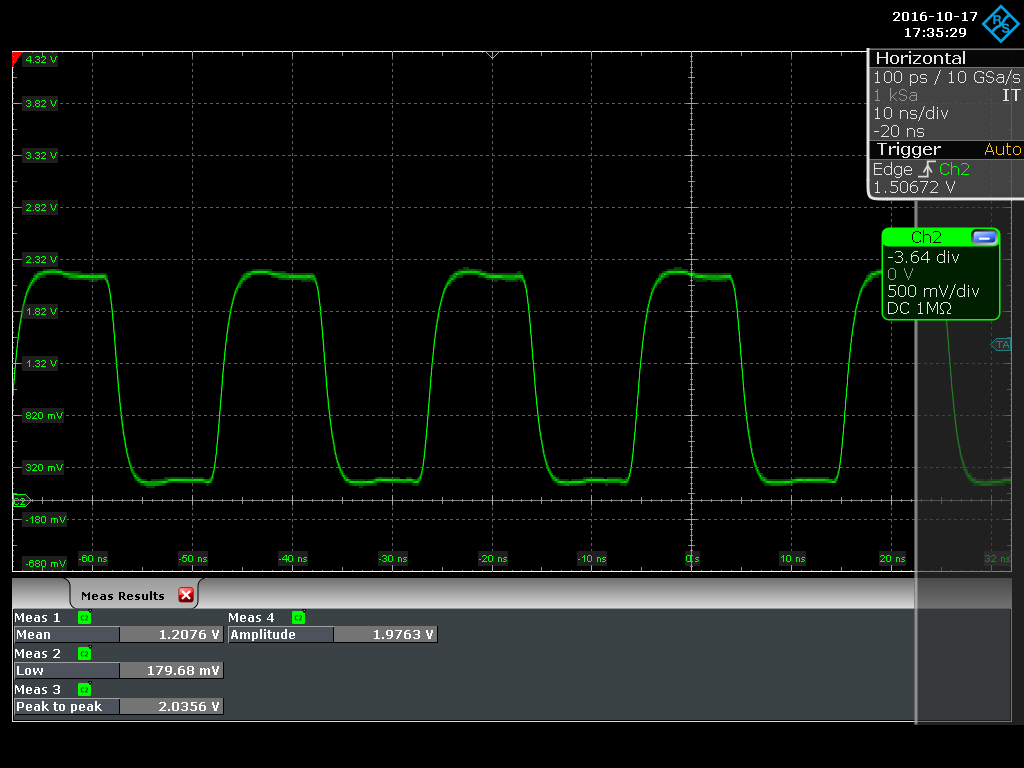Hello,
I am unable to have a lock on the clock while having a reference 48Mhz clock and a 48Mhz output.
I am using the passive loop capacitors and resistor values that are given as example in the datasheet.
The values that I used in the PLL are the ones shown bellow:
LBW seems a bit low but my guess is that shouldn't be a problem.
I am using the a 48Mhz VCXO with:
Control Voltage Tuning Slope - 40 ~ 75 ppm/V
BW - 10 kHz
The settings that I am using for the CDCM7005 configuration are the following:
word 0: 0x4007F1FC
word 1: 0x28000001
word 2: 0x500000F2
word 3: 0x0000024B
PS: Although I am using analog lock, I have already tested digital lock and no changes were observed.




